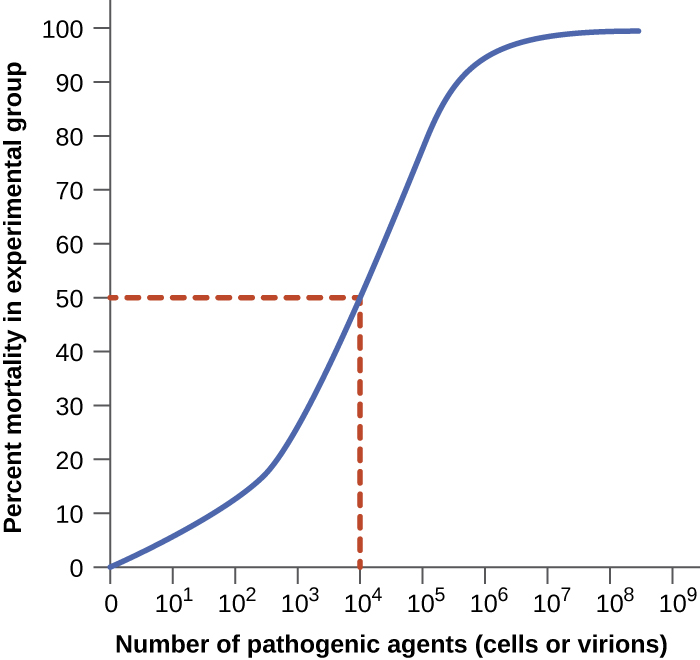| << Chapter < Page | Chapter >> Page > |
The ability of a microbial agent to cause disease is called pathogenicity , and the degree to which an organism is pathogenic is called virulence . Virulence is a continuum. On one end of the spectrum are organisms that are avirulent (not harmful) and on the other are organisms that are highly virulent. Highly virulent pathogens will almost always lead to a disease state when introduced to the body, and some may even cause multi-organ and body system failure in healthy individuals. Less virulent pathogens may cause an initial infection, but may not always cause severe illness. Pathogens with low virulence would more likely result in mild signs and symptoms of disease, such as low-grade fever, headache, or muscle aches. Some individuals might even be asymptomatic.
An example of a highly virulent microorganism is Bacillus anthracis , the pathogen responsible for anthrax . B. anthracis can produce different forms of disease, depending on the route of transmission (e.g., cutaneous injection, inhalation, ingestion). The most serious form of anthrax is inhalation anthrax. After B. anthracis spores are inhaled, they germinate. An active infection develops and the bacteria release potent toxins that cause edema (fluid buildup in tissues), hypoxia (a condition preventing oxygen from reaching tissues), and necrosis (cell death and inflammation). Signs and symptoms of inhalation anthrax include high fever, difficulty breathing, vomiting and coughing up blood, and severe chest pains suggestive of a heart attack. With inhalation anthrax, the toxins and bacteria enter the bloodstream, which can lead to multi-organ failure and death of the patient. If a gene (or genes) involved in pathogenesis is inactivated, the bacteria become less virulent or nonpathogenic.
Virulence of a pathogen can be quantified using controlled experiments with laboratory animals. Two important indicators of virulence are the median infectious dose (ID 50 ) and the median lethal dose (LD 50 ) , both of which are typically determined experimentally using animal models. The ID 50 is the number of pathogen cells or virions required to cause active infection in 50% of inoculated animals. The LD 50 is the number of pathogenic cells, virions, or amount of toxin required to kill 50% of infected animals. To calculate these values, each group of animals is inoculated with one of a range of known numbers of pathogen cells or virions. In graphs like the one shown in [link] , the percentage of animals that have been infected (for ID 50 ) or killed (for LD 50 ) is plotted against the concentration of pathogen inoculated. [link] represents data graphed from a hypothetical experiment measuring the LD 50 of a pathogen. Interpretation of the data from this graph indicates that the LD 50 of the pathogen for the test animals is 10 4 pathogen cells or virions (depending upon the pathogen studied).


Notification Switch
Would you like to follow the 'Microbiology' conversation and receive update notifications?